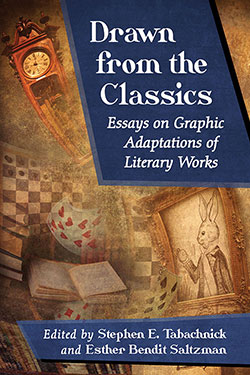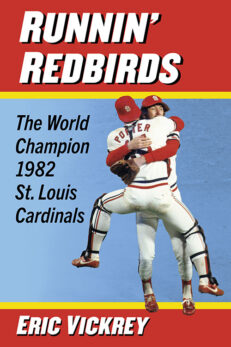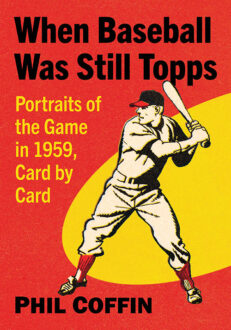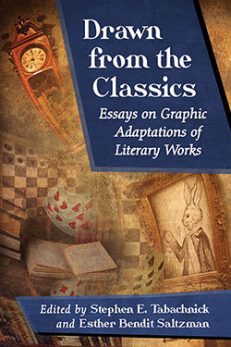Drawn from the Classics
Essays on Graphic Adaptations of Literary Works
$29.95
In stock
About the Book
The graphic novel is the most exciting literary format to emerge in the past thirty years. Among its more inspired uses has been the superlative adaptation of literary classics. Unlike the comic book abridgments aimed at young readers of an earlier era, today’s graphic novel adaptations are created for an adult audience, and capture the subtleties of sophisticated written works. This first ever collection of essays focusing on graphic novel adaptations of various literary classics demonstrates how graphic narrative offers new ways of understanding the classics, including the works of Homer, Poe, Flaubert, Conrad and Kafka, among many others.
About the Author(s)
Bibliographic Details
Edited by Stephen E. Tabachnick and Esther Bendit Saltzman
Format: softcover (6 x 9)
Pages: 292
Bibliographic Info: 43 photos, notes, bibliographies, index
Copyright Date: 2015
pISBN: 978-0-7864-7879-8
eISBN: 978-1-4766-1976-7
Imprint: McFarland
Table of Contents
Table of Contents
Preface 1
Introduction 3
Here There Be Monsters (and Heroes): Homer’s Odyssey and the Graphic Novel—Paul D. Streufert 19
Hwaet If? Beowulf in Comics—Jason Tondro 33
Killing Desdemona: Staging Sexual Violence in Othello Graphic Novels—J. Caitlin Finlayson 46
Illustrating the Uncertainty Within: Recent Comics Adaptations of Edgar Allan Poe—Derek Parker Royal 60
The Good, the Bad and the Parodic in Graphic Adaptation—Eric S. Rabkin 82
In Search of the White Whale: Adaptations of Moby-Dick—Dirk Vanderbeke 96
“I don’t see what good a book is without pictures or conversations”: Imaginary Worlds and Intertextuality in Alice in Wonderland and Alice in Sunderland—Matthew J.A. Green 110
“Does That Change Anything?” (Post)Feminist Implications of Gemma Bovery—Eric L. Berlatsky 127
Drawing Style, Genre and the Destabilization of Register in a Graphic Adaptation of Trollope’s 1878 Novel John Caldigate—David Skilton and Simon Grennan 147
The Masks of Dracula: In Search of the Authentic Performative Vampire in Three Graphic Novel Adaptations of Bram Stoker’s Dracula—Ana G. Gal 161
The Picture and Dorian Gray: Interpretive Pluralism in Graphic Adaptations of Wilde’s Novel—Esther Bendit Saltzman 177
Illustrating the Abyss: An Interview with Catherine Anyango on Heart of Darkness —Christine Ferguson 194
Visualizing the Unrepresentable: Graphic Novel Adaptations of Kafka’s Metamorphosis—Martha Kuhlman 205
An Unusual Adaptation of F. Scott Fitzgerald’s The Great Gatsby—Stephen E. Tabachnick 221
Not Telling, but Retelling: From Raymond Queneau’s Exercises in Style to Matt Madden’s 99 Ways to Tell a Story and Back—Jan Baetens 235
Illustrated Man: Ray Bradbury, Comics and the Authorized Graphic Novels—Darren Harris-Fain 249
Bibliography 263
About the Contributors 267
Index 271
Book Reviews & Awards
“recommended” —Choice; “the volume succeeds…in establishing that ‘while pure literary texts will always have their unique merits, graphic novel adaptations can bring a new vision and a new interpretation to the works upon which they are based,’ and I am delighted to have a host of exceptional work that I can reference the next time I am questioned about the ‘dumbing down’ of great literature through comics adaptations”—English Literature in Translation 180–1920.





